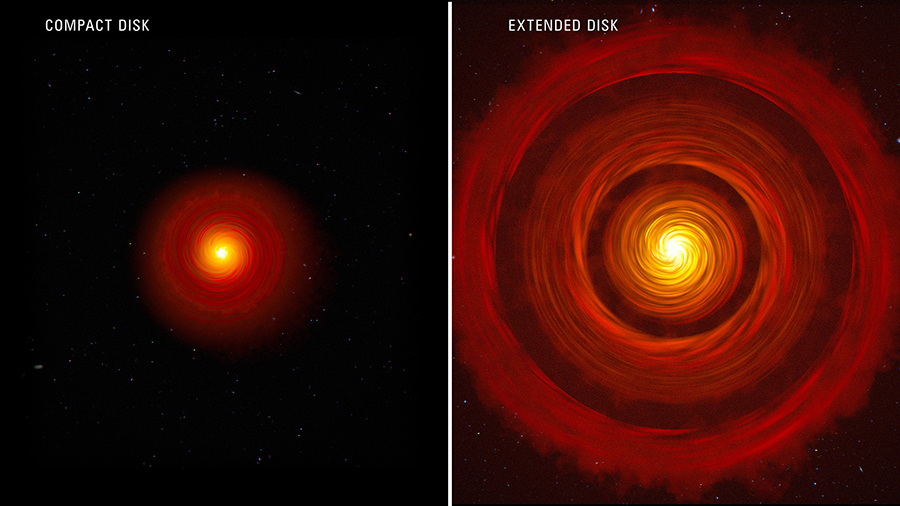
NASA / ESA / CSA / Joseph Olmsted (STScI)
Astronomers have used the James Webb Space Telescope to spot a long-sought piece in the puzzle of rocky planet formation. They’ve discovered evidence that icy pebbles drift toward newborn stars, delivering both water vapor and solid material to the inner parts of new solar systems.
Water is thought to play a huge role in making a terrestrial planet like Earth habitable, but where does it come from? Planets form from the detritus of star formation, condensing out of swirling protoplanetary disks of gas and dust. Except, any water originally in the inner part of the disk would soon be evaporated by the ferocity of the fledgling star.
Now, a team led by Andrea Banzatti (Texas State University) has used Webb to explore four such disks around stars in the constellation of Taurus, each of which is just a few million years old. Two of the disks are extremely compact (just 10 to 20 astronomical units, or a.u., across), while two are considerably bigger (100 to 150 a.u.). There is greater friction within more compact disks, which causes distant, icy pebbles to lose their orbital energy and drift inward. The larger disks, on the other hand, have rings and gaps, which can impede such pebble drift.
Once a drifting pebble crosses a region known as the snow line, the temperature rises to the point where the outer veneer of ice sublimates into water vapor. This process leaves behind the bare, rocky material from which terrestrial planets then form. By using the Medium-Resolution Spectrometer on Webb’s Mid-Infrared Instrument, Banzatti’s team found an excess of cool water around the snow line in the two compact disks, compared with the larger ones. The result appears in the Astrophysical Journal Letters.

NASA / ESA / CSA / Leah Hustak (STScI)
“Webb finally revealed the connection between water vapor in the inner disk and the drift of icy pebbles from the outer disk,” Banzatti says.
“In the past, we had this very static picture of planet formation, almost like there were these isolated zones that planets formed out of,” says team member Colette Salyk (Vassar College). “Now, we actually have evidence that these zones can interact with each other. It’s also something that is proposed to have happened in our solar system.”
“[Webb] is making a massive difference to this kind of study,” says Thomas Haworth (Queen Mary University of London), who was not involved in the research. “With facilities like ALMA we can study the structure and composition of the colder, outer disk, but JWST is now enabling us to study the composition of the inner disk.”

NASA / ESA / CSA / Joseph Olmsted (STScI)
It’s still early days, though. The four disks studied so far were chosen so as to be at opposite ends of the size scale. “It could potentially take only one more observation of another disk of some mid-size to get a result that would not fit the beautiful correlations seen for the first four disks,” says Jane Greaves (Cardiff University, UK), who was also not involved in the research.
We won’t have to wait too long for those data, as this quartet of disks is just the beginning of the planned observations with Webb. Perhaps then we’ll have a better idea of the link between icy pebbles and habitable worlds, and in turn, we’ll know the story of how we came to be here a little better.
